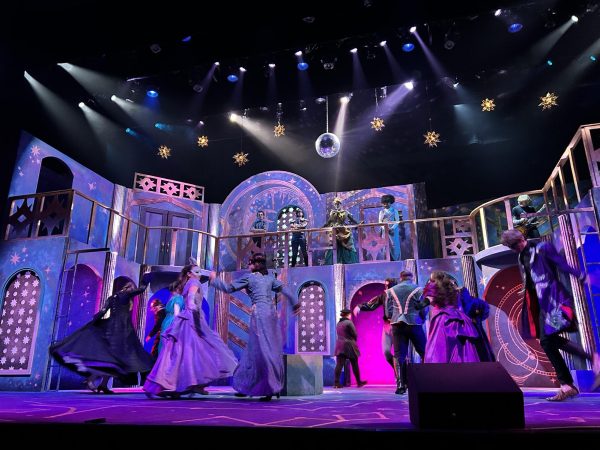Failing to Make us Sad: A Review of UNCW Presents Yasmin Levy
Israeli-born singer-songwriter Yasmin Levy wants to make her listeners cry, but in a good way. That’s the impression that she gave during her Feb. 28 appearance at Keenan Auditorium as part of the UNCW Presents series of visiting personalities.
“Have I made you sad yet?” she even asked at one point late in a 90-minute set dominated by songs of loss, pain and longing. Judging, however, by the enthused reaction of the Monday-evening crowd to her blend of Ladino, flamenco and original compositions, she had clearly failed in her mission.
Ladino refers to the language and music of Sephardic Jews, whose exile from Spain in 1492 brought them into contact with diverse Middle Eastern influences which in turn shaped their language and culture. Levy learned the tradition from her father, Yitzhak Levy, a researcher of the Ladino oral tradition, who died when she was one. A recording Yitzhak left of himself singing, however, enabled Yasmin to perform “Una Pastora,” a shepherdess, a moving “duet” with him as one of the evening’s songs.
The soaring, wailing requirements of Ladino music provide an optimal medium for Levy’s powerful, expressive vocal range. Appearing with a backing band comprised of guitarist James Cuthbertson, percussionist and Levy’s husband Ishay Amir, stand-up double bass player Miles Danso and highly versatile wind instrument specialist Vardin Hovanissian, the beautiful, visibly pregnant Levy was an elegant figure in a long white dress. Smiling and chatting between songs, she seemed to be having fun amidst all the heartbreak music.
Mixing songs from her back catalogue and current album, “Sentir,” feeling, Levy treated the audience to vocals that moved from shrieks and cries on mournful reminiscences such as “Nos Llegó el Final,” we reached the end, back into rich melodies on “Jaco” and booming refrains on a Spanish-language cover of Leonard Cohen’s “Hallelujah,” all with an effortless command. The wide, whisper-to-scream dynamic and Levy’s lilting, trembling delivery on the traditional Ladino ballad “La Hija de Juan Simon,” Juan Simon’s Daughter, showed it all off at once and marked one of the show’s peaks.
Not everything worked, however. Levy’s attempt to involve the crowd in a sing-a-long of “Hallelujah” seemed like throwing everyone under the bus. C’mon, Yasmin; that one’s hard. And the emotion of the pieces, though it came through in the style, was undermined by the fact that few in the audience could understand the Spanish and Ladino lyrics. Noting that Levy speaks at least three languages fluently, one wondered why she couldn’t throw the audience a bone with a song or two in English. Maybe next time.
These are, of course, minor quibbles. And what Levy’s music lacks in first-time pop appeal, it makes up for with a depth and richness that rewards additional time spent getting to know it. That’s why they sell albums after the show, one supposes. In any case, like great blues and gospel singers in the American tradition, Yasmin Levy made the audience happy while trying to make them cry.








